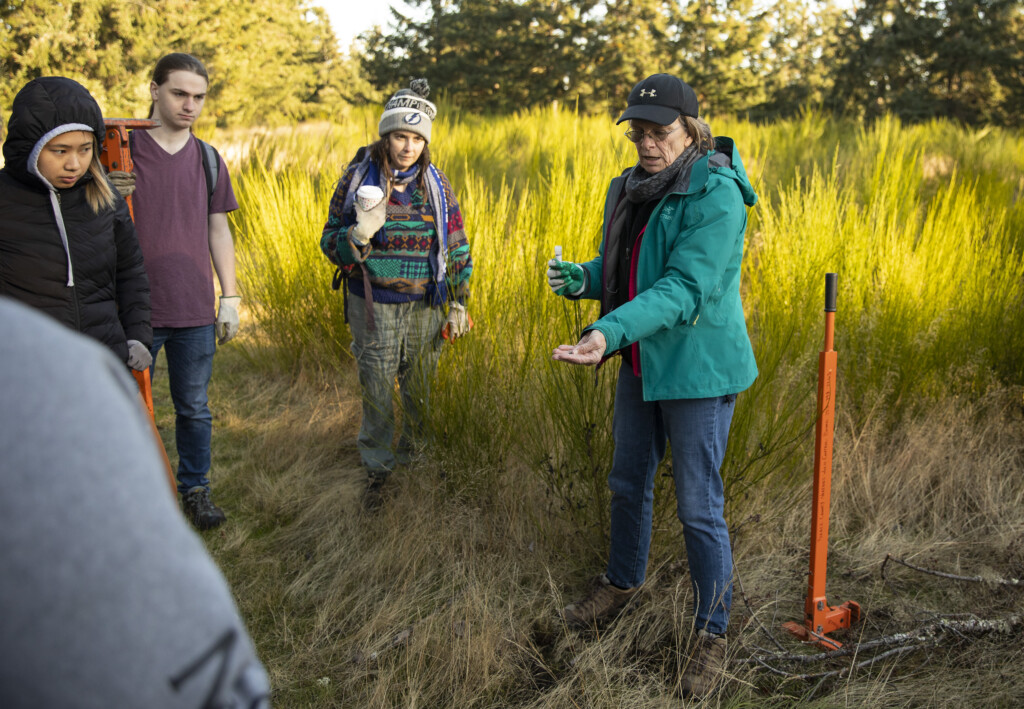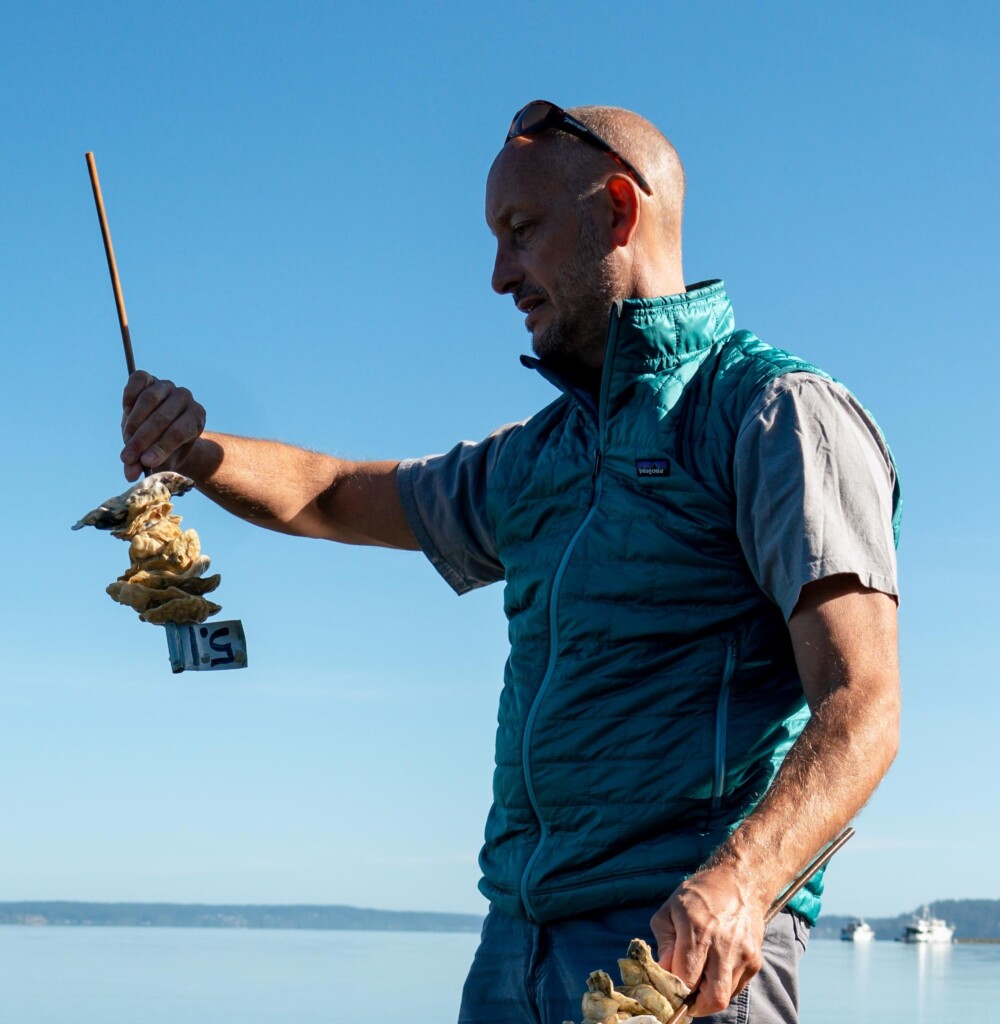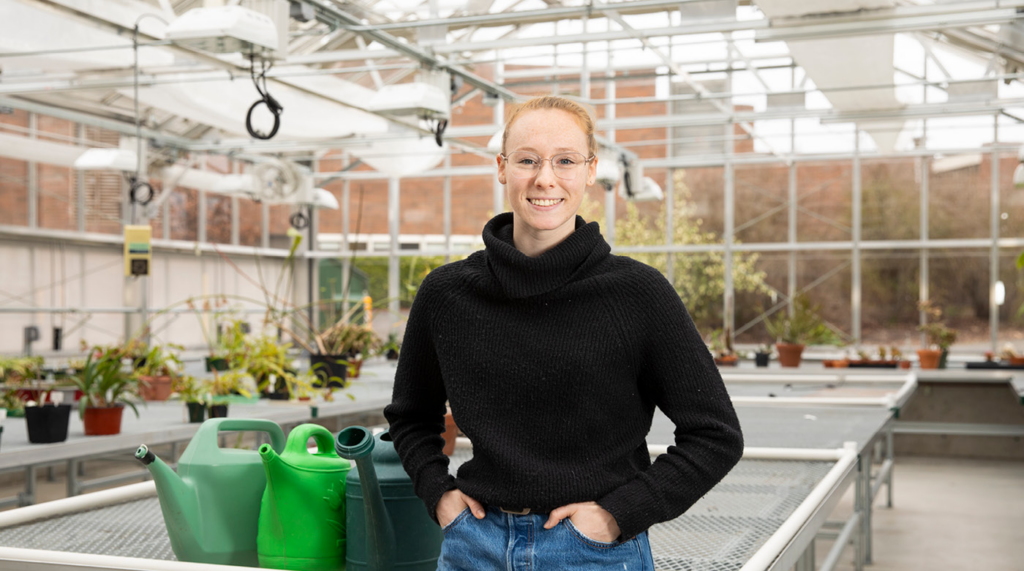Page 7 • (110 results in 0.046 seconds)
-

PLU alumna Becca Anderson ‘19, ‘22 is in her first year teaching biology to ninth graders at Sammamish High School in Bellevue. Her classroom consists of a diverse population of students — something her recent completion of the Culturally Sustaining STEM Teacher Program at Pacific…
in the program,” she said. “It all starts with getting to know your kids as people first and then addressing the learner side … if you can’t address the people side of them, they’re never going to trust you with the learner side of them.” Read Previous PLU announces Carol Sheffels Quigg Award winners Read Next PLU’s new anatomy and physiology lab is the first in a series of science upgrades LATEST POSTS Three students share how scholarships support them in their pursuit to make the world better
-
Grant supports environmental research With a $90,000 grant, the Environmental Studies Program intends to provide students and faculty members with more opportunities for research and creative projects. The program received the funding from the Wiancko Charitable Foundation in December 2007. The program’s faculty determined the…
, Teska said. The goal is for each project to produce a result, say a paper or project, and for the researchers to communicate their findings to local stakeholders. For his project, Behrens and two students will examine how temperature affects the diet and digestive physiology of herbivorous and omnivorous prickleback fishes. Todd and one student will look at glacier responses to climate change in Mount Rainier National Park and the impact on regional water resources. Finally, McKenna and two students
-
Admission to the PLU MSN program is a competitive process. Faculty within the School of Nursing will evaluate your academic preparation, personal statement, resume, and recommendation as presented
of the following prerequisite courses with a minimum grade in each of B- (2.67 on a 4.0 scale): College-level Statistics (both descriptive and inferential) Human Anatomy and Physiology I (with lab within last six years) Human Anatomy and Physiology II (with lab within last six years) Developmental Psychology—Lifespan Intro to Microbiology (with lab within last six years) Nutrition APPLY NOW TO THE PLU ELMSN PROGRAM Notes: 1) To see if your previous coursework fulfills our prerequisite classes
-
. Prerequisite: BIOL 226. (4) BIOL 354 : Natural History of Vertebrates A systematic survey of vertebrate diversity including fishes, amphibians, non-avian reptiles, and mammals. Coverage emphasizes phylogenetic relationships, evolutionary trends, natural history, and anatomy. Field trips and laboratory focus on observation and identification of local species. Prerequisite: BIOL 226. (4) BIOL 355 : Ornithology The study of birds inclusive of their anatomy, physiology, behavior, ecology, and distribution
-

Why biology at PLU? “There has never been a dull moment with this major. Whether it be in lecture or during a lab, I know I will gain knowledge and experiences that will only uplift my time at PLU. I will be honest, it can…
courses in ecology and evolution, cell structure and function, and physiology have given me a broad foundation of understanding that I can carry forward with me into my future work.” – Daniel What skills are you learning? “There are tons of skills that I have been able to gain during my time at PLU, and there are so many opportunities to learn new ones too! Some very important skills I have gained are teamwork and leadership. Through my job working for the biology department, and other clubs and
-

Professor of Biology | Department of Biology | behrenmd@plu.edu | 253-535-7565 | My teaching activities focus primarily on ecology and animal diversity.
animal diversity includes general coverage for lower division students and invertebrate zoology. I have the pleasure of teaching both in the Pacific Northwest and the Caribbean. My research interests include ecology and biogeography, primarily in aquatic systems. Much of my past research has focused on interactions between herbivores and algae in marine systems. This has included studies of geographical gradients of herbivorous fish diversity and how temperature effects on physiology may play a role
Office HoursMon: 11:30 am - 1:00 pmWed: 10:00 am - 11:00 amThu: 10:00 am - 11:00 amFri: 2:00 pm - 3:00 pmMon - Fri: - -
Biology professors win coveted Murdock grants Turning over barnacle-encrusted rocks, one by one, craning your neck to catch a glimpse of a bird or sloshing through a muddy tributary might not seem like hard core scientific endeavors. But think again. It’s research such as this…
Behrens, the grant means he will continue his work into researching prickleback fishes indigenous to the Olympic peninsula. Behrens will study of the digestive physiology of tidepool fishes, and how temperature and diet affect the growth in the species. This will further the research into why some areas support fish that are herbivores, while other parts of the globe support fish that are basically carnivores and omnivores. It’s been recognized since the early 1960s that there are lots of herbivores
-
At the PLU School of Nursing, care for our patients and for our world combine with highest professional ethics and commitment to academic and practice excellence, to prepare you for a deeply
BSN Grads are Hired Faster More information Small School, Big Impact: Marc Gombio ’23 talks about his experience in PLU’s School of Nursing Read More Interested in Teaching with Us? More Information Your browser does not support the video tag. The Bachelor of Science in Nursing program Learn More Message from the Dean Read More PLU’s new anatomy and physiology lab is the first in a series of science upgrades Read More Commitment, Caring and LeadershipThanks for visiting the PLU School of
School of Nursing253-535-7590School of Nursing Ramstad, Room 214 Tacoma, WA 98447-0003 -

Sarah Davis, a biology major and Hispanic studies minor, began her PLU journey with the idea that medicine and health care would be the ultimate goal, but then a couple of classes focused on plant development and global agriculture grew a new passion. “I have…
used to have apple orchards in Eastern Washington,” she said, explaining why her PLU biology classes resonated with her. “From that point forward, I began to pursue plant biology, as I had both personal and academic passion in the subject.” On her way to her degree, Davis completed a capstone project on plant genetic engineering in agriculture and an internship with Washington State University, where she researched tree fruit physiology in response to changing environmental conditions. After
-

Sarah Davis began her PLU journey with the idea that medicine and health care would be the ultimate goal, but then a couple of classes focused on plant development and global agriculture grew a new passion “I have a family history of agriculture, my grandfather…
genetic engineering in agriculture and an internship with Washington State University, where she researched tree fruit physiology in response to changing environmental conditions. After graduation, Davis plans to begin a master’s and PhD program at University of British Columbia to study plant science — specifically how high-value horticulture crops are impacted by different environmental conditions. We caught up with her to reflect more on her PLU experience. Tell us about your capstone project. My
Do you have any feedback for us? If so, feel free to use our Feedback Form.


